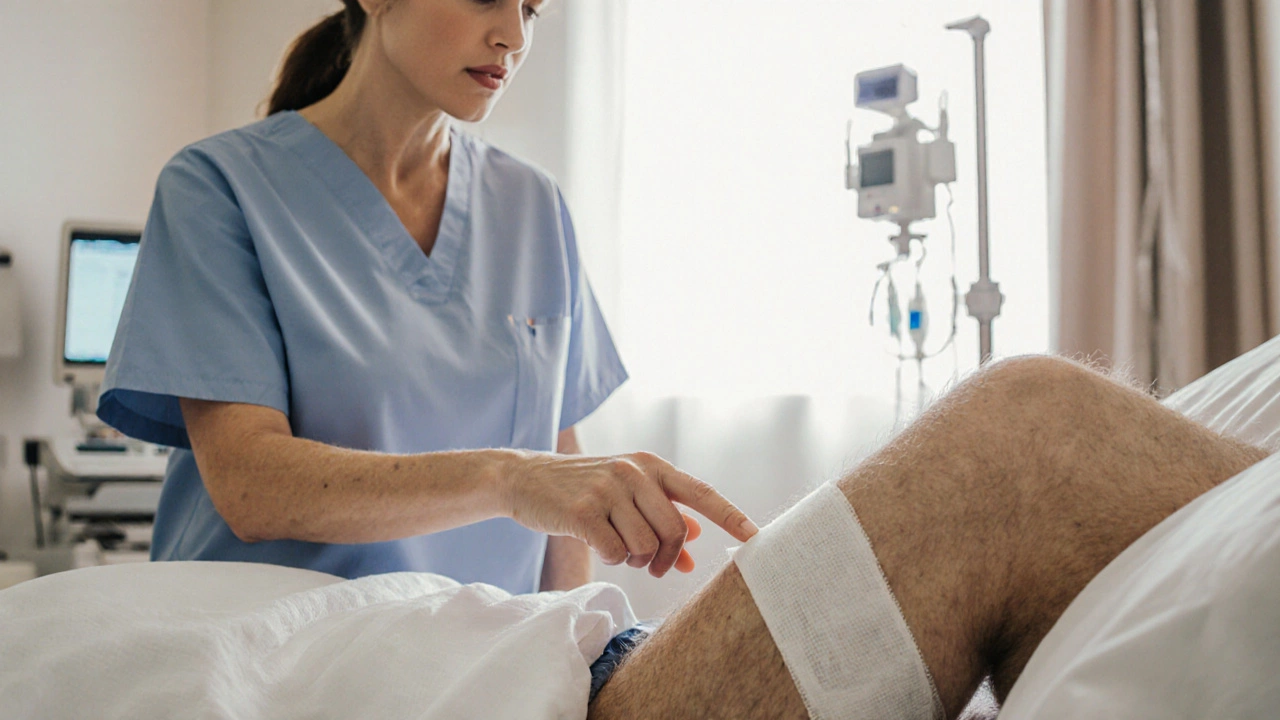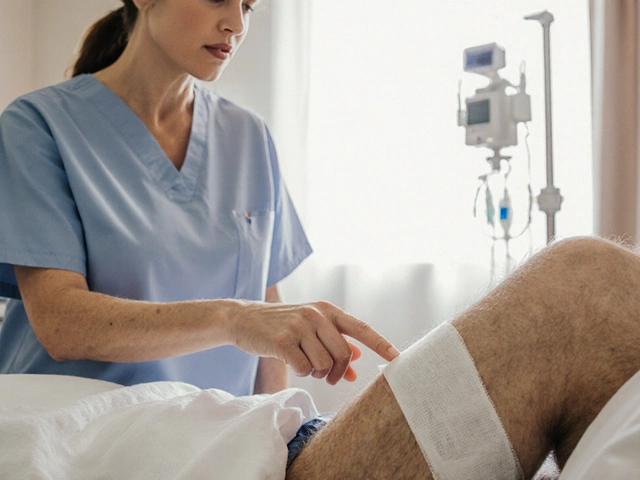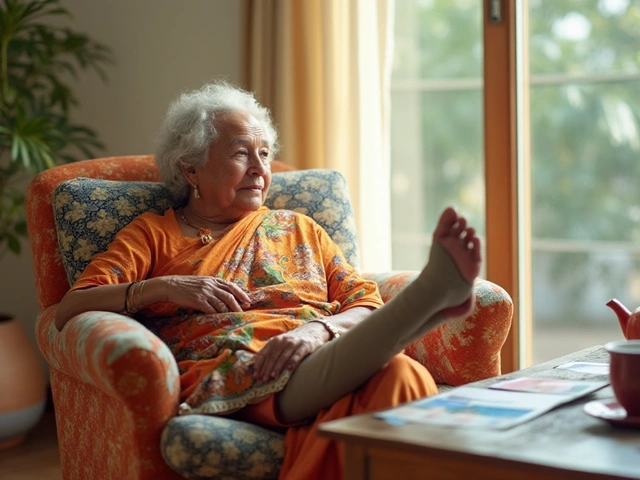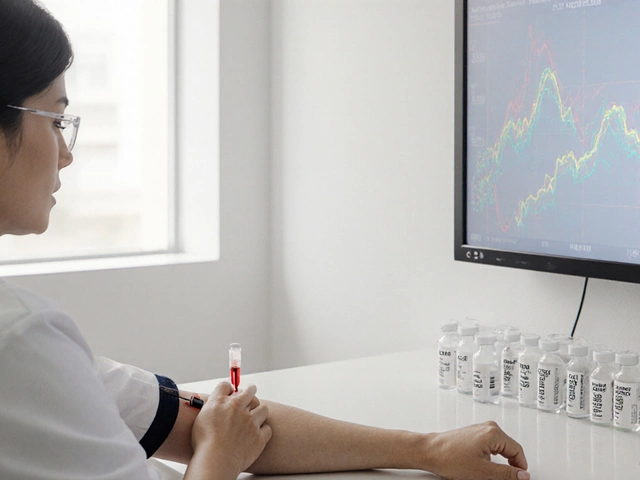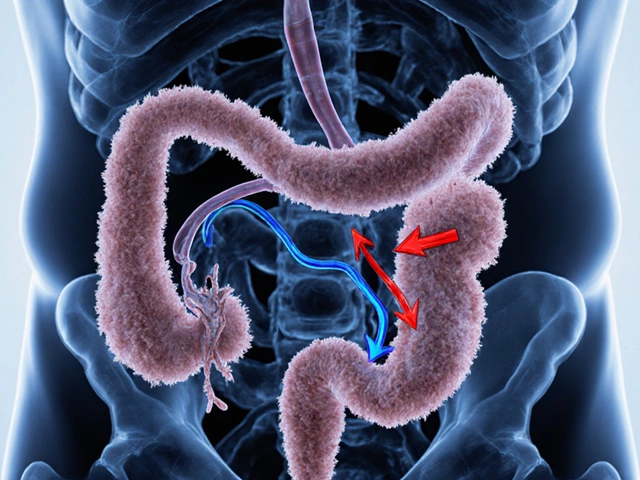You've just had Knee Replacement Surgery is a surgical procedure that replaces damaged joint surfaces with artificial components, and now the nurse says, “No shower for a few days.” Wondering why you can’t just hop into the tub? This article walks you through the medical reasons, the dangers of early exposure to water, and practical ways to stay clean while you heal.
What Happens Inside the Surgical Wound
After the operation, the incision is closed with sutures or staples, and a sterile dressing covers the area. This Post-Operative Wound is a controlled environment where blood clots form a natural seal, and antibiotics in the tissue keep germs at bay. Any breach-especially from water-can dislodge the clot, soak the dressing, and invite bacteria.
Key Risks of Showering Too Soon
- Infection: Moisture creates a breeding ground for bacteria like Staphylococcus aureus. An infected incision can turn a routine recovery into a weeks‑long ordeal.
- Drainage Problems: Many surgeons place a Surgical Drain a thin tube that removes excess fluid. Water pressure can clog or pull the drain out, leading to fluid buildup.
- Bandage Damage: Standard gauze dressings lose adhesion when wet, exposing the incision and increasing bleeding risk.
- Swelling & Pain: Hot water can cause vasodilation, worsening swelling around the knee and making physical therapy harder.
Hospital Guidelines on Shower Timing
Most orthopedic units follow a similar timeline:
| Post‑Op Day | Allowed Activity | Notes |
|---|---|---|
| 1‑2 | Sponge bath only | Keep incision dry, use disposable covers. |
| 3‑5 | Waterproof dressing optional | If dressing stays sealed, brief shower possible. |
| 6‑7 | Full shower with protective cover | Avoid high‑pressure jets, no soaking. |
| 8+ | Normal bathing | Follow surgeon’s clearance. |
This table gives a clear picture of when you can move from a sponge bath to a full shower, based on the typical healing curve.
Safe Alternatives Until You Can Shower
While you wait, staying clean is still doable:
- Sponge Bath: Use a soft, damp washcloth. Focus on the abdomen, arms, and legs away from the knee.
- Waterproof Dressing Cover: Commercial kits (e.g., Hibicloth) seal the incision, allowing a quick shower without soaking the wound.
- Shower Chair: A sturdy chair lets you sit while the nurse gently rinses the rest of your body, keeping the knee elevated.
- Handheld Sprayer on Low Pressure: If approved, aim water away from the incision and keep the spray gentle.
Step‑by‑Step Shower Protocol (When Approved)
- Gather a Waterproof Dressing Cover that fits the size of your incision. Test the seal before stepping in.
- Set the water temperature to lukewarm (around 30‑32°C). Hot water spikes swelling.
- Turn the faucet on low pressure. Avoid handheld jets that direct force at the knee.
- Enter the shower using a Shower Chair. Keep the knee elevated to reduce drainage.
- Wash the rest of your body with a mild, fragrance‑free soap. Do NOT scrub around the covered incision.
- Rinse gently, then step out onto a non‑slip mat. Pat the cover dry with a clean towel-do not rub.
- Remove the cover as instructed, inspect the incision, and apply a fresh sterile dressing if needed.
Following these steps minimizes the chance of water seeping under the cover and keeps your recovery on track.
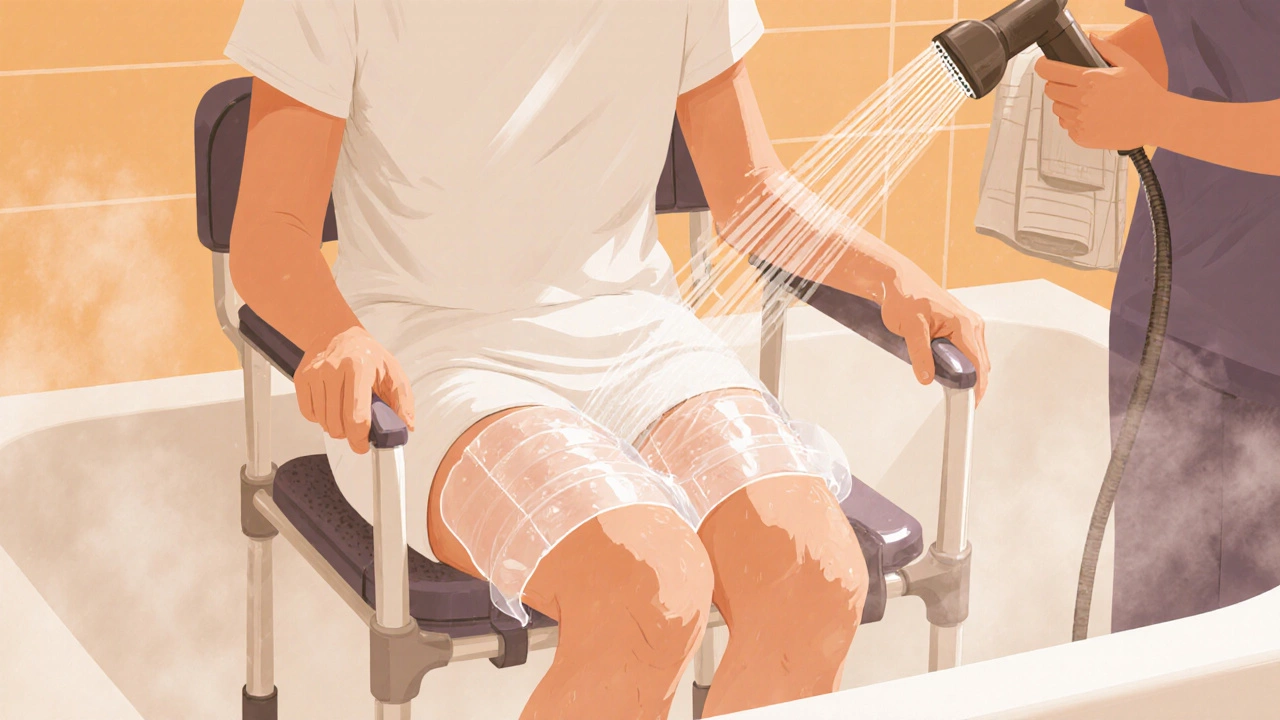
Additional Tips to Keep the Wound Clean
- Hand Hygiene: Always wash your hands before touching the dressing.
- Change Dressings Promptly: If the dressing becomes damp or dirty, replace it with a new sterile one.
- Watch for Drainage: Note any sudden increase in fluid amount or a change in color (yellow or green suggests infection).
- Follow Antibiotic Regimen: Complete the full course prescribed, even if you feel fine.
- Elevate the Leg: When seated or lying down, keep the knee raised to reduce swelling.
When to Call Your Surgeon or Physical Therapist
If you notice any of the following, reach out immediately:
- Redness, warmth, or increasing pain around the incision.
- Fever above 38°C (100.4°F).
- Drainage that turns foul‑smelling or cloudy.
- Swelling that doesn’t improve after 48 hours of rest.
- Any loosening of the waterproof cover during a shower.
Early intervention can prevent a minor issue from becoming a serious setback.
Bottom Line
Skipping the shower for the first few days after knee replacement isn’t about convenience-it’s a protective measure. By keeping the incision dry, you lower infection risk, preserve the integrity of drains and dressings, and give your body the best chance to heal. Use sponge baths, waterproof covers, and shower chairs as interim solutions, and follow the step‑by‑step protocol once your surgeon gives the green light.
Can I use a regular plastic bag as a waterproof cover?
A makeshift bag often leaks at seams. Specialized waterproof dressings are designed to seal tightly and are tested for medical use. If you must improvise, ensure it’s completely sealed and replace it as soon as possible.
How long does it usually take for the incision to be fully closed?
Most incisions achieve sufficient tensile strength by day 7‑10, but surgeons often wait until day 14 before allowing unrestricted bathing to be extra safe.
Is it okay to use a handheld shower head after day 6?
Yes, but keep the pressure low and direct the spray away from the incision. A gentle rain setting works best.
What signs show that my drain might be blocked?
A sudden drop in fluid output, swelling around the knee, or a feeling of fullness under the dressing can indicate a blockage. Contact your care team right away.
Can I take a bath after the incision is fully healed?
Once the surgeon confirms the wound is fully closed and any drains are removed (usually 2‑3 weeks), a regular bath is safe. Still avoid submerging the knee for long periods in the first months.
